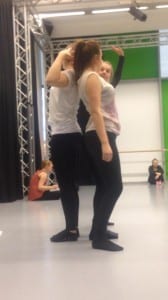Bannon, Fiona; Holt, Duncan. Journal of Dance & Somatic Practices (2012) Vol. 3 Issue 1/2, p215-227.
Contact Quarterly’s Contact Improvisation Sourcebook. (1997) Massachusetts: Contact Editions.
Curtis, B. (1988) Exposed to Gravity. Contact Quarterly/ Contact Improvisation Sourcebook 1, 13 156-162.
Heitkemp, D. (2003). Moving from the Skin: An Exploratorium. Contact Quarterly/Contact Improvisation Sourcebook II, Vol. 28:2. 256-264.
Lepkoff, D. (1999) What is release technique? [online] Available from http://www.daniellepkoff.com/Writings/What%20is%20Release.php [Accessed 20 October 2014].
Omegabranch (2011) Contact Improvisation Mirva Mäkinen and Otto Akkanen. [online video] Available from https://www.youtube.com/watch?v=YMLbWxujoGw [Accessed 10 November 2014].
Ravn, Susanne (2010) Sensing weight in movement. Journal of Dance and Somatic Practices, 2, 21-34.
Steve Paxton (2009) steve paxton. smalldance. [online video] Available from, http://www.youtube.com/watch?v=6sJKEXUtv44 [Accessed 13/10/2014].
Stover, J. (1989) Some Considerations When Structuring an Improvisation (to be seen by an audience). Contact Quarterly/ Contact Improvisation Sourcebook II, 14, 185.
Turner, Robert. Contact improvisation and political power (2010) Vol. 54, Issue 3, pages 123-135.
Woodhull A. Center of Gravity. Contact Quarterly/ Contact Improvisation Sourcebook I, Vol. 4. Pp. 43-48.


